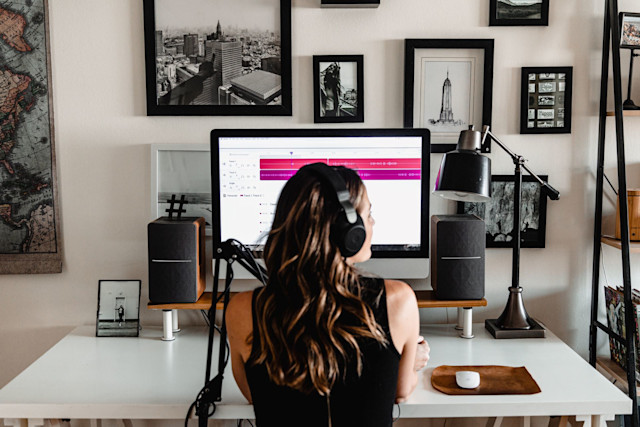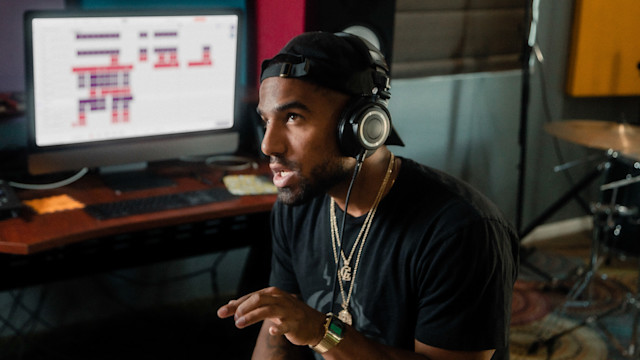Secret formula for perfect mixes: Practical tips to avoid listening fatigue
September 26, 2024 - Discover how to keep your ears fresh for crisp, accurate mixes: don't let fatigue ruin your music!

Ear fatigue is the silent enemy that all producers and mixers face, but few discuss. It's that uncomfortable feeling when the ears, after hours in front of monitors or headphones, begin to betray our creative decisions.
You become overconfident, desensitized, and before you know it, you're pushing high frequencies that previously would have made you recoil. So here we are to unveil the secret formula: it's not just about how to mix, it's about how to take care of your ears to always achieve the best version of your mix.
What is ear fatigue?
Listening fatigue is not something that happens from one moment to the next. It is a progressive process that occurs when you subject your ears to long mixing sessions without a break. Ears, like any other muscle in the body, become exhausted. And when they get tired, they stop being as accurate. That initial clarity that helped you distinguish each frequency starts to blur, and you end up making the wrong decisions, from mix balance to frequency spectrum control.
Have you ever felt that after a few hours of mixing, bass sounds “louder” or treble sounds less bright? That's not the fault of your monitors or your DAW; it's auditory fatigue acting up and affecting your mix.
Also, another thing to keep in mind is the wear and tear on your ears over time, fatigue sets in faster, headaches start to become more common, you become more sensitive to overly loud sounds, and it takes longer for your ears to recover. You may not notice this now, but in a few years you will start to have some of these problems if you maintain bad habits and neglect your most important tool: your ears.
1. Keep volume levels under control
One of the most common mistakes, especially among those just starting out, is mixing at high volumes. I know it can be tempting, we often believe that to feel the energy of a track we have to turn up the volume, but the louder the volume, the faster your ears will fatigue.
The trick is to mix at moderate volumes, between 75 and 85 dB SPL. This range allows you to hear everything clearly without straining your ears. Also, if you can make a mix sound good at low volume, it will sound great when you turn it up. Listening at low volume also allows you to perceive fine details that might go unnoticed when the sound is bombarding you from all sides at an uncontrolled level.
2. The importance of breaks
Imagine that your ears are like a high-resolution camera. The longer you use it non-stop, the more it starts to lose sharpness. Therefore, you need to “focus” again. The simplest and most effective way to do this is to take regular breaks.
A 10-15 minute break for every hour of mixing can do wonders. If possible, use that time to get outdoors, where ambient noise is minimal. Silence, or the soft sounds of nature, help to “reset” your hearing, allowing you to come back with a more accurate perception. These breaks will also help you with creative blocks, that feeling that something is missing but you can't find what it is.
3. Beware of high frequencies
High frequencies are the most likely to cause hearing fatigue. After hours of exposure, your brain becomes desensitized to those sounds, and you begin to compensate by turning those highs up in the mix. The result: an excessively bright mix that can then sound harsh and unbalanced when you listen to it with fresh ears.
To combat this, it's crucial not to overexpose yourself to them. This does not mean avoiding high frequencies, but handling them with respect. Using corrective equalization from the start, cleaning up unwanted resonances and maintaining a natural balance, can prevent major problems.
4. Proper monitors and headphones
While your equipment is not the only factor in avoiding listening fatigue, having monitors or headphones that provide an accurate representation of the sound can help reduce the time you spend adjusting minute details.
If you have monitors, be sure to keep them well calibrated and with good acoustics in the room, this will allow you to be confident in what you are hearing without straining your ears and spending a lot of time trying to get the sound you are looking for without getting a good result.
If you work with headphones, invest in good quality headphones that offer a balanced and comfortable sound for long sessions. There are two main types of headphones that give you different sound performance, closed and open headphones. Both, depending on the range, will or will not give you the response you need to achieve the sound you want. In general terms, the hearing fatigue in closed hearing aids is higher, since the pressure generated in the ear is stronger. With open headphones you can work for a longer period of time, of course all this depending on the volume you set in both cases.
However, even if you have the best equipment, it is still vital to alternate between monitoring on speakers and headphones. Listening to the mix from different perspectives can give you a better idea of what it sounds like on different systems, and also give your ears a break from the fatigue of a single device.

5. Involve the body, not just the ears.
Mixing and music production are not only auditory tasks, but physical ones as well. Spending hours sitting in front of a screen, focused only on what you hear, can limit your ability to perceive sound accurately. Why? Because the body also gets fatigued, and when you're physically exhausted, your mind doesn't process sound in the same way. Physical fatigue can amplify auditory fatigue, and what once sounded clear and distinct to you now sounds muddy or cluttered.
Moving your body is like giving your ears a break. When you have been immobile for a long time, your blood circulates more slowly, even affecting the way your ears process frequencies. A simple walk around the room, stretching or even deep breathing exercises can be enough to reactivate your energy and sharpen your auditory perception.
Also, don't underestimate the power of feeling music with your whole body, not just your ears. When mixing at low to moderate volumes, moving your body to the beat helps you connect with the groove and energy of the track, without having to rely on high volumes to “feel” the music. After all, music production is as much a sensory experience as it is a technical task.
Bonus Tip: A good trick is to use the stopwatch or a timer to take physical breaks every hour. Use those moments to stretch, walk around, get a snack, and refresh both your body and your mind. You'll come back with a sharper perception and renewed energy to continue perfecting your blend.
6. Change your musical reference
When we listen to the same music over and over again, our ears get used to it and lose sensitivity to details, which negatively affects the result of your mix. To avoid this, a good trick is to listen to different genres of music or reference songs. Variety allows your ears to “reset” and avoid the monotony that leads to listening fatigue. In addition, this habit can inspire new ideas and approaches to your own music.
7. The golden rule: listening menus
Imagine your mixing process as a restaurant menu. You wouldn't consume a single dish for hours on end, would you? The same applies to mixing. Alternate between different sections of the song, switch tasks (from mixing to editing, or mixing to critical listening), and review your mix from different playback sources.
As for sources, don't limit yourself to your studio monitors. Listen on mid-range headphones, on computer or cell phone speakers, even in the car. If your mix sounds good everywhere, you've done your job well.
Read more: Mixing Music: The Knowledge You Need to Mix Like The Pros
8. Silence: your best friend
This tip is simple but powerful: sometimes, the best way to improve your hearing is not to listen to anything at all. Silence, especially after long sessions, is essential. It gives your ears a chance to completely relax and recover from the bombardment of frequencies.
Taking time away from the sound and disconnecting, both physically and mentally, improves your auditory perception in the long run. Remember, music is air; silence is oxygen.
9. Tools that can help you
There are tools that can be very helpful in managing auditory fatigue. Plugins that allow you to visualize the frequency spectrum of your mix and compare it to a reference are a great help when your ears are fatigued, having a visual guide can prevent you from making unnecessary adjustments to the mix.
This is only a secondary tool, remember not to abuse the use of visual meters or similar, train and trust especially your ear for decision making and troubleshooting.
10. Know the signs of hearing fatigue
The most important thing to do to prevent hearing fatigue is to learn to recognize the warning signs before it's too late - it's easy to ignore them when you're focused or inspired, but if you find yourself constantly turning up the treble or volume to regain that “spark” you felt at the beginning, it's time to take a break.
That loss of sensitivity in the high frequencies is one of the first manifestations of listening fatigue. The temptation to keep working is strong, but doing so will only lead to mixing decisions that will cost you hours to fix later.
It's not just your ears that warn you. Many times, hearing fatigue is accompanied by a feeling of pressure in the head, or even minor ear aches or headaches. At that point, the best thing to do is to stop completely, turn down the volume and let silence do its remedial work.
A good producer not only knows how to mix, but also when to stop. Over time, you'll develop that ability to read your body's subtle signals, and you'll understand that sometimes silence is your best tool for creating more accurate and detailed mixes.
Conclusion: It is not a sprint
Music production is not a race against time. It is a discipline that requires precision, patience, and above all, respect for your ears. It doesn't matter how good your monitors, plugins or mixing skills are: if your ears are not fresh, your mix will not reach its full potential.
Taking care of your ears is just as important as taking care of your gear. After all, they are your most valuable tool.
About the author
Odiseo is a music producer and mixing and mastering engineer with experience ranging from music creation as a session and concert musician, beatmaker, live sound engineer, and recording engineer, to audio production for short films, providing a broad perspective on technical concepts and musical skills to take music to another level.
Get started with Soundtrap today!